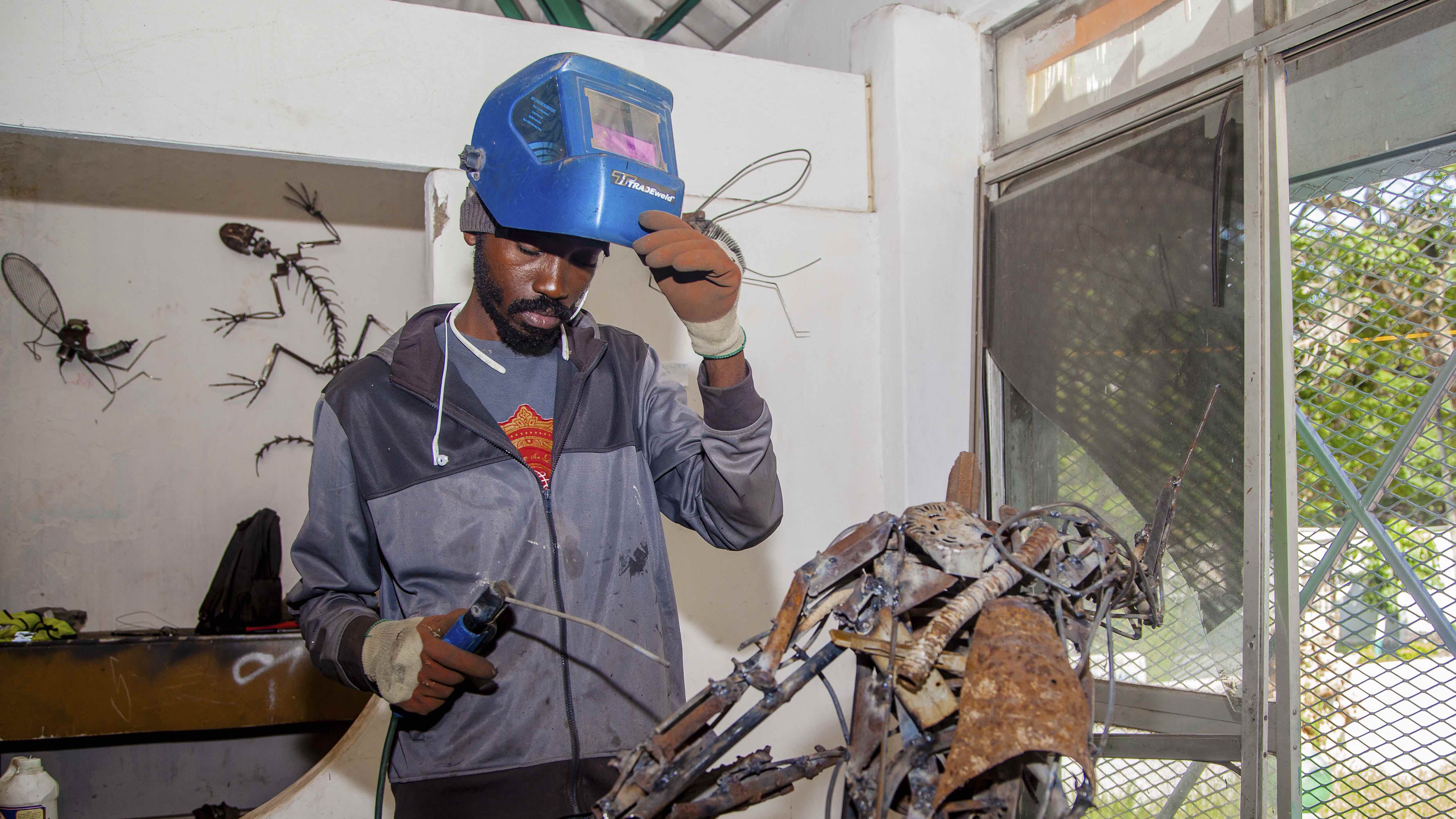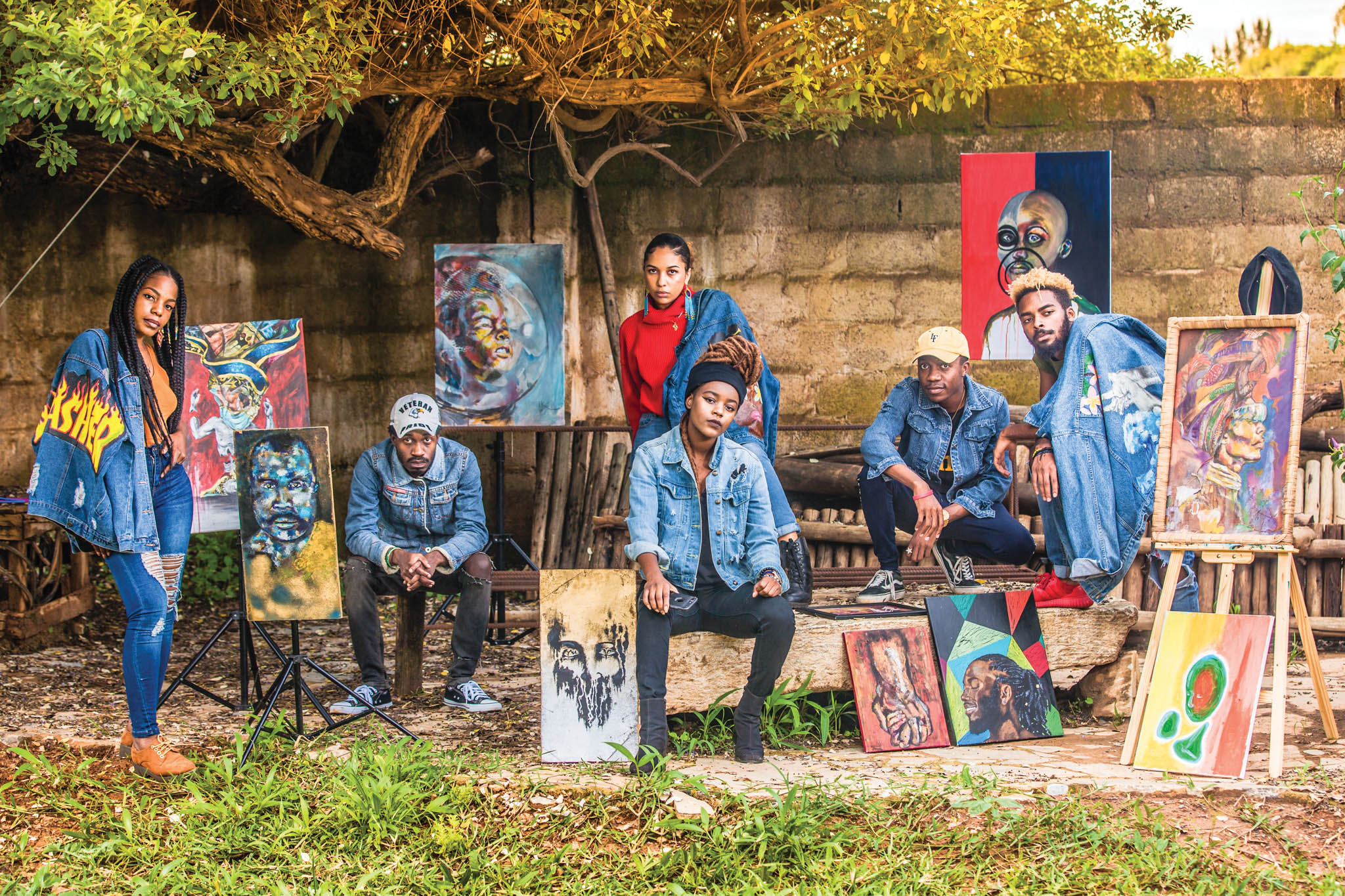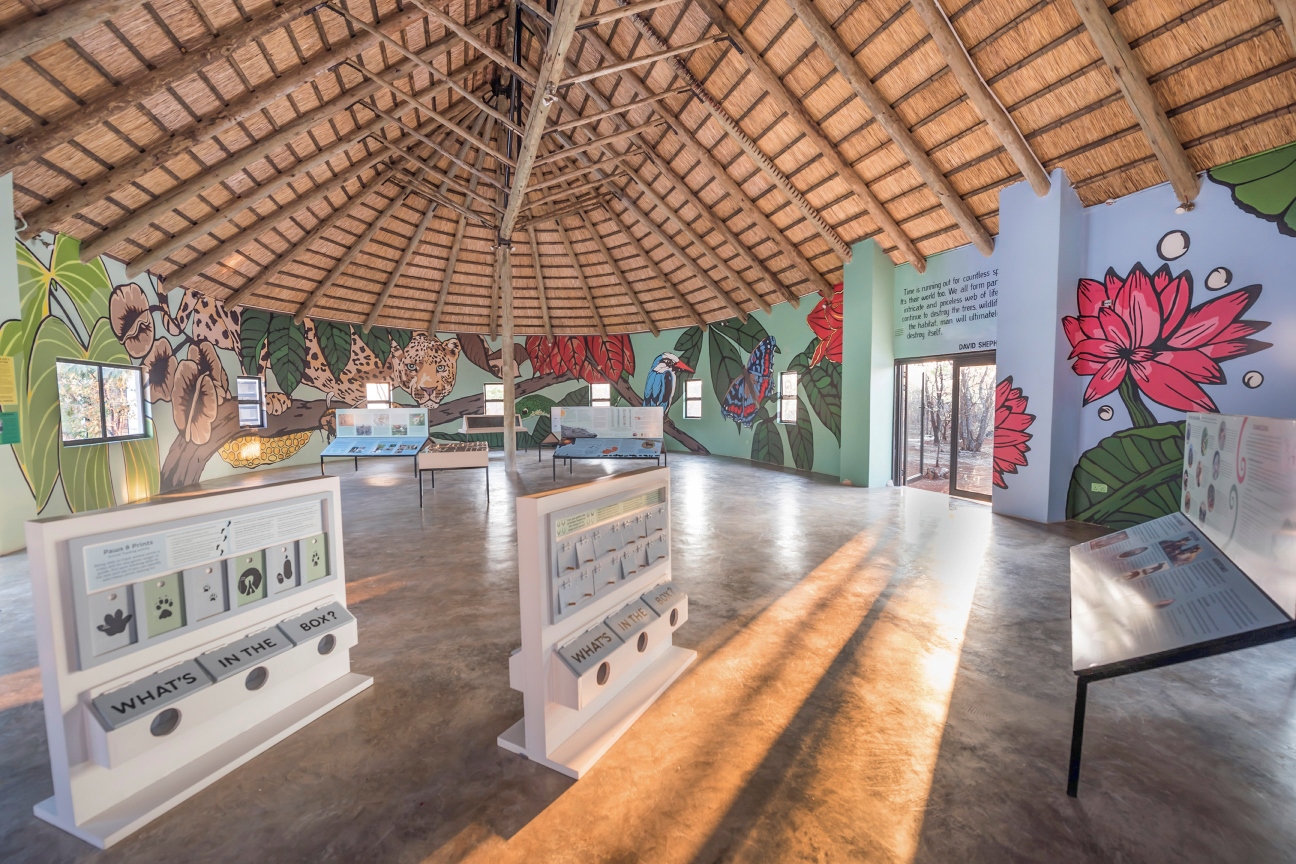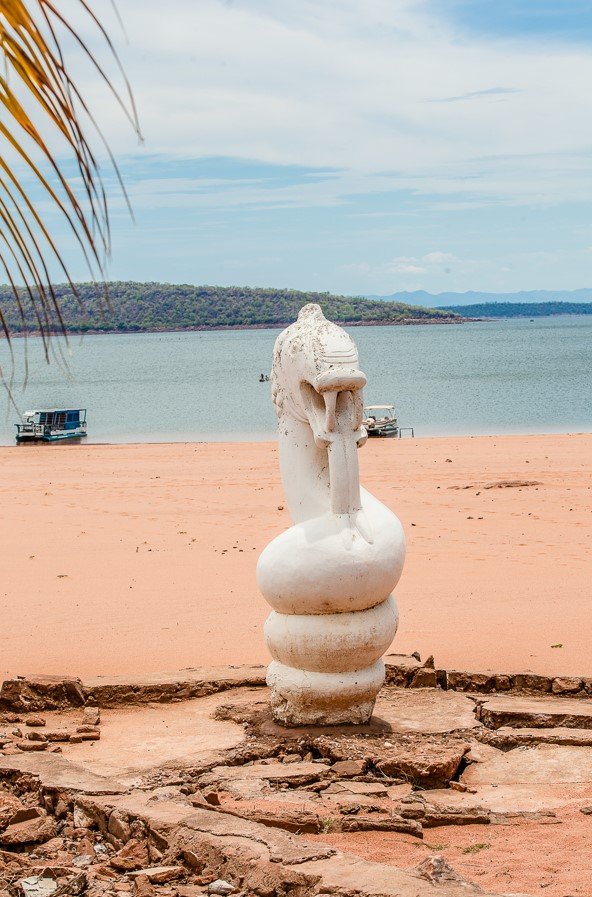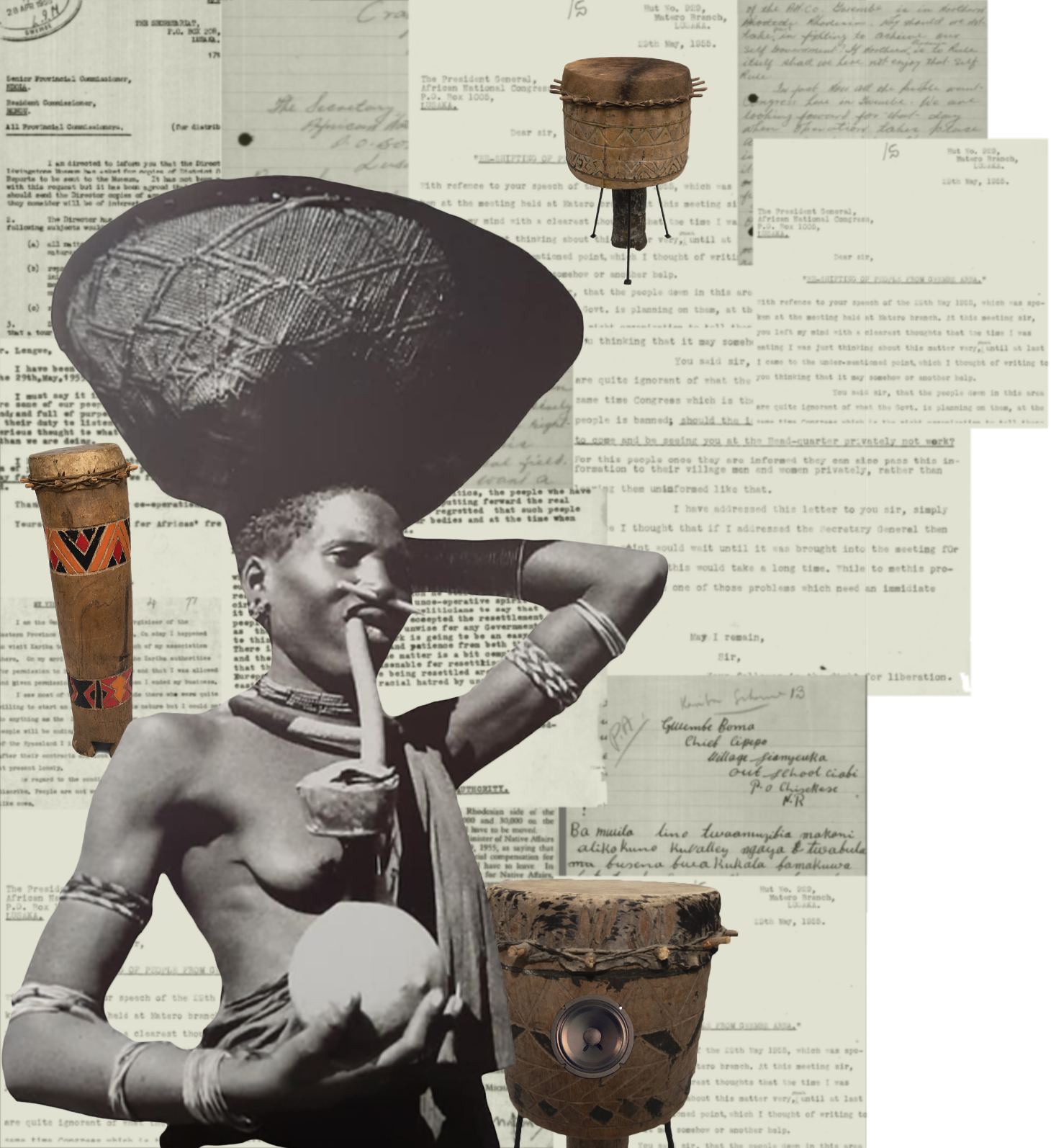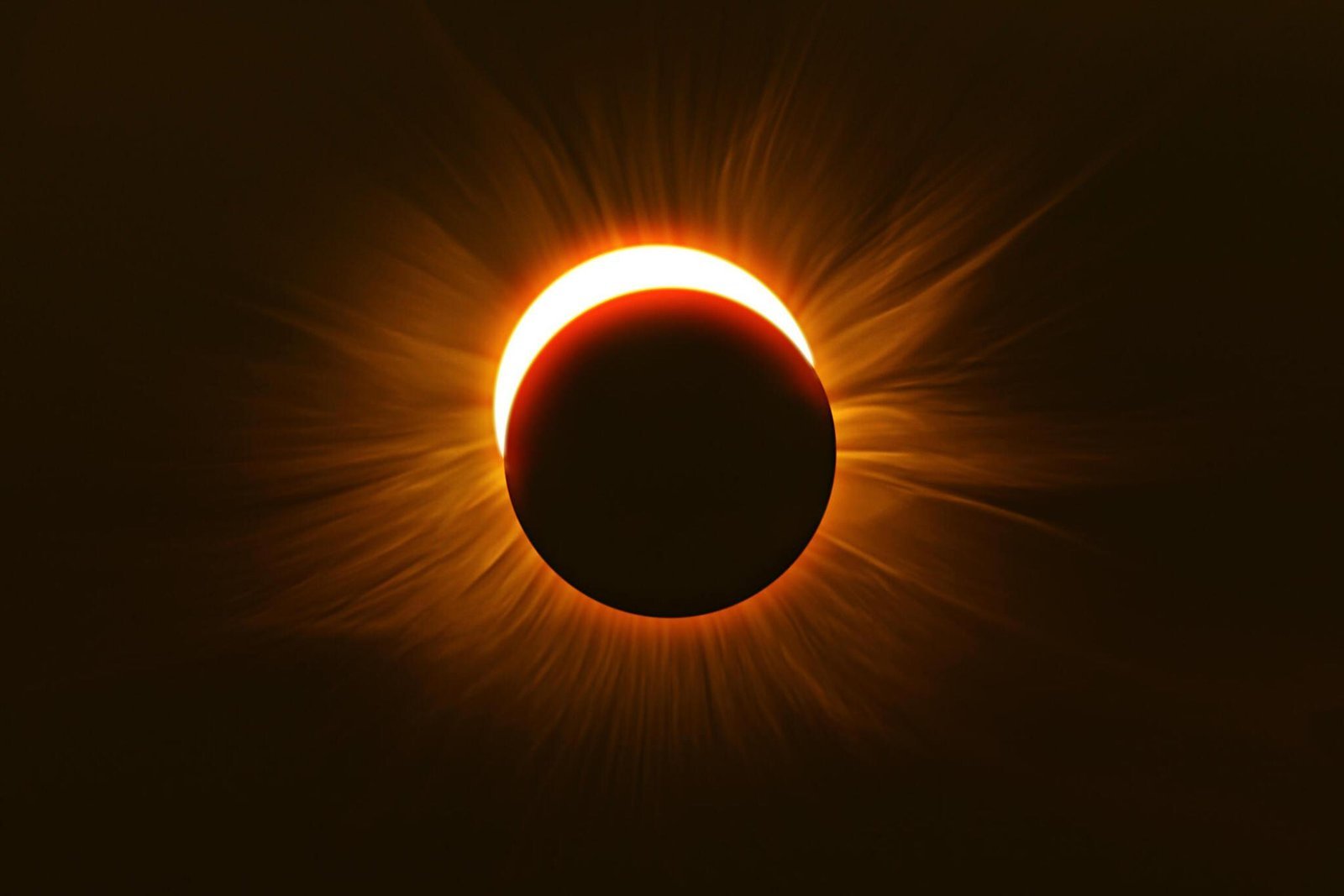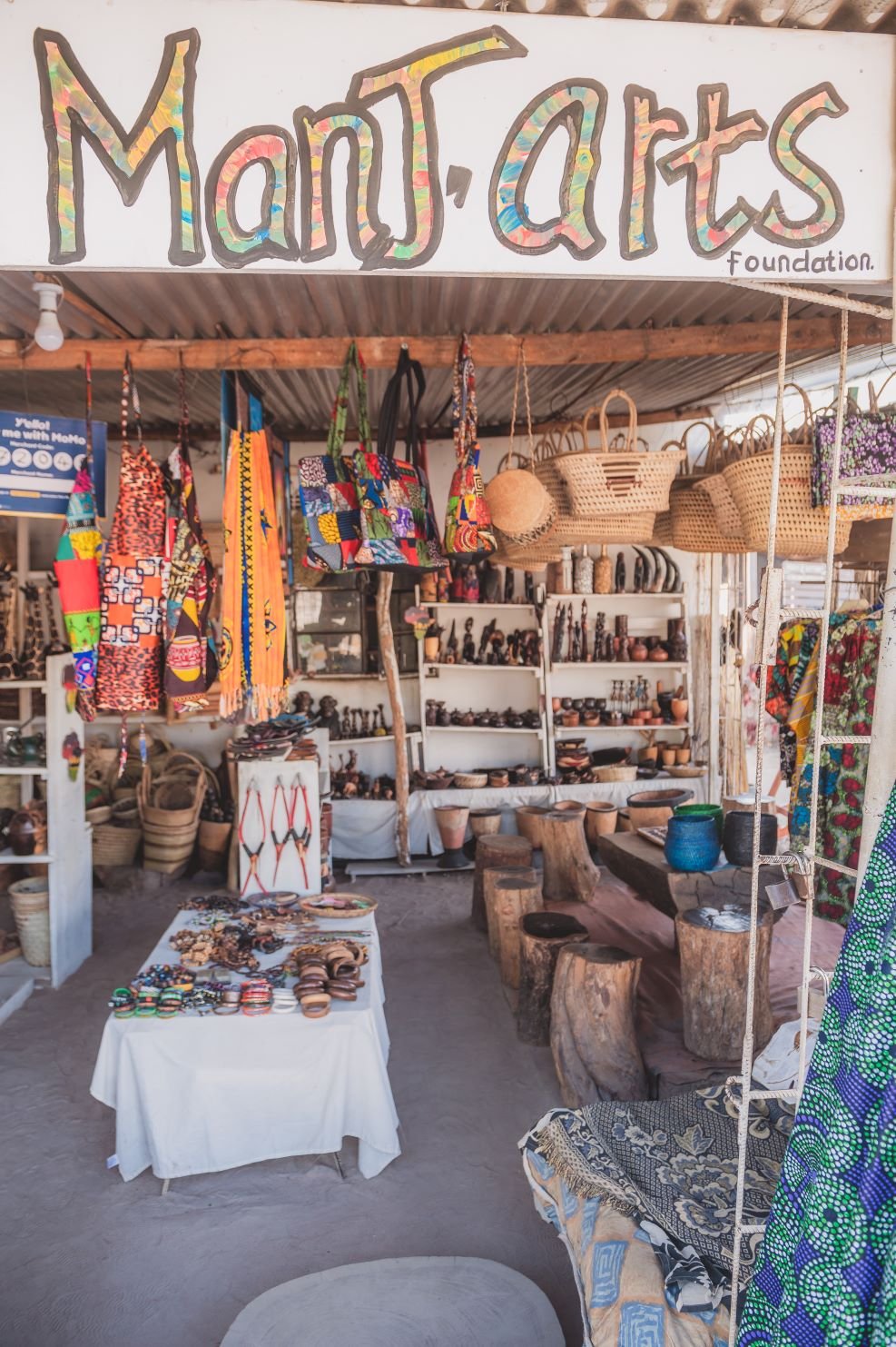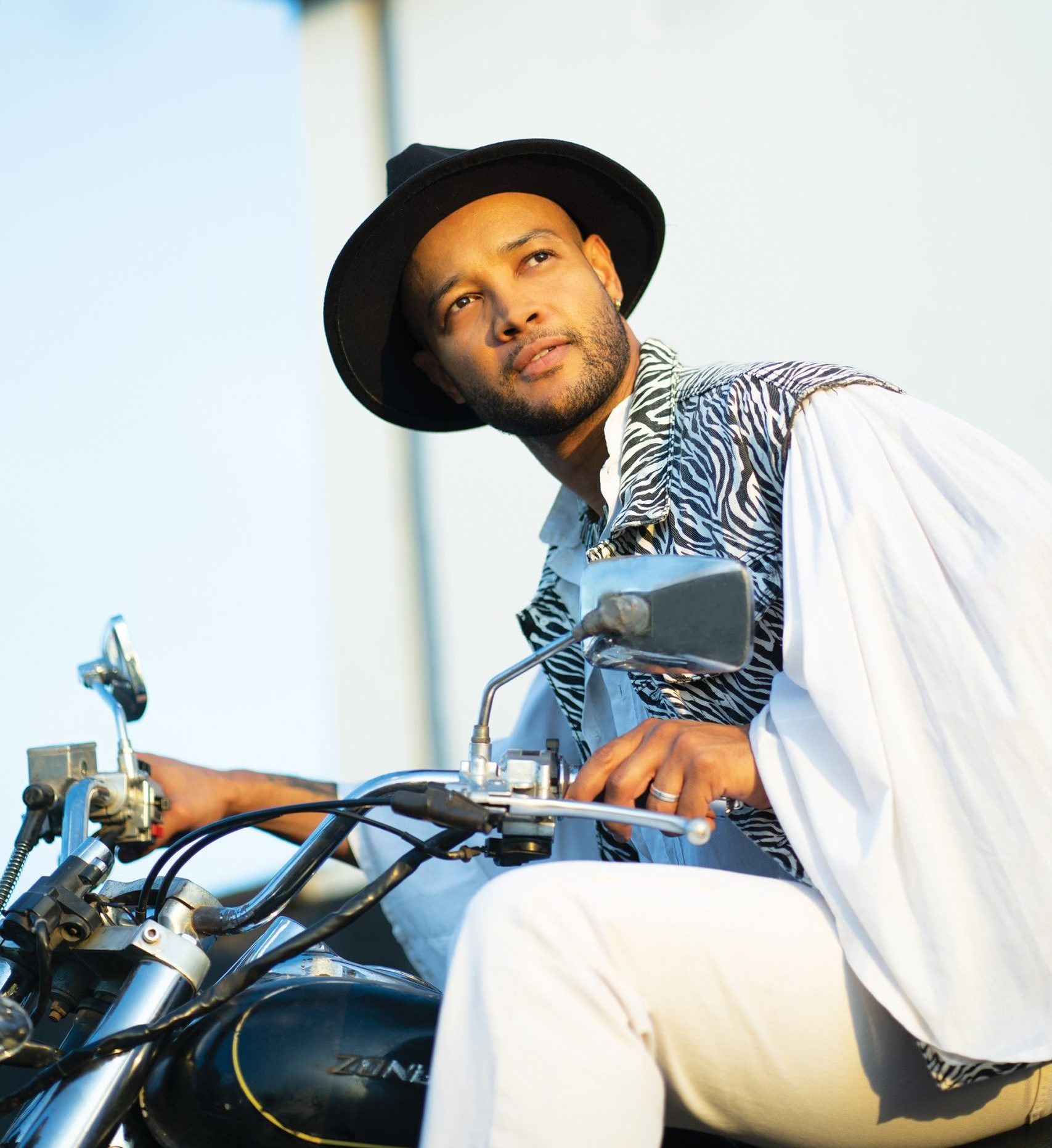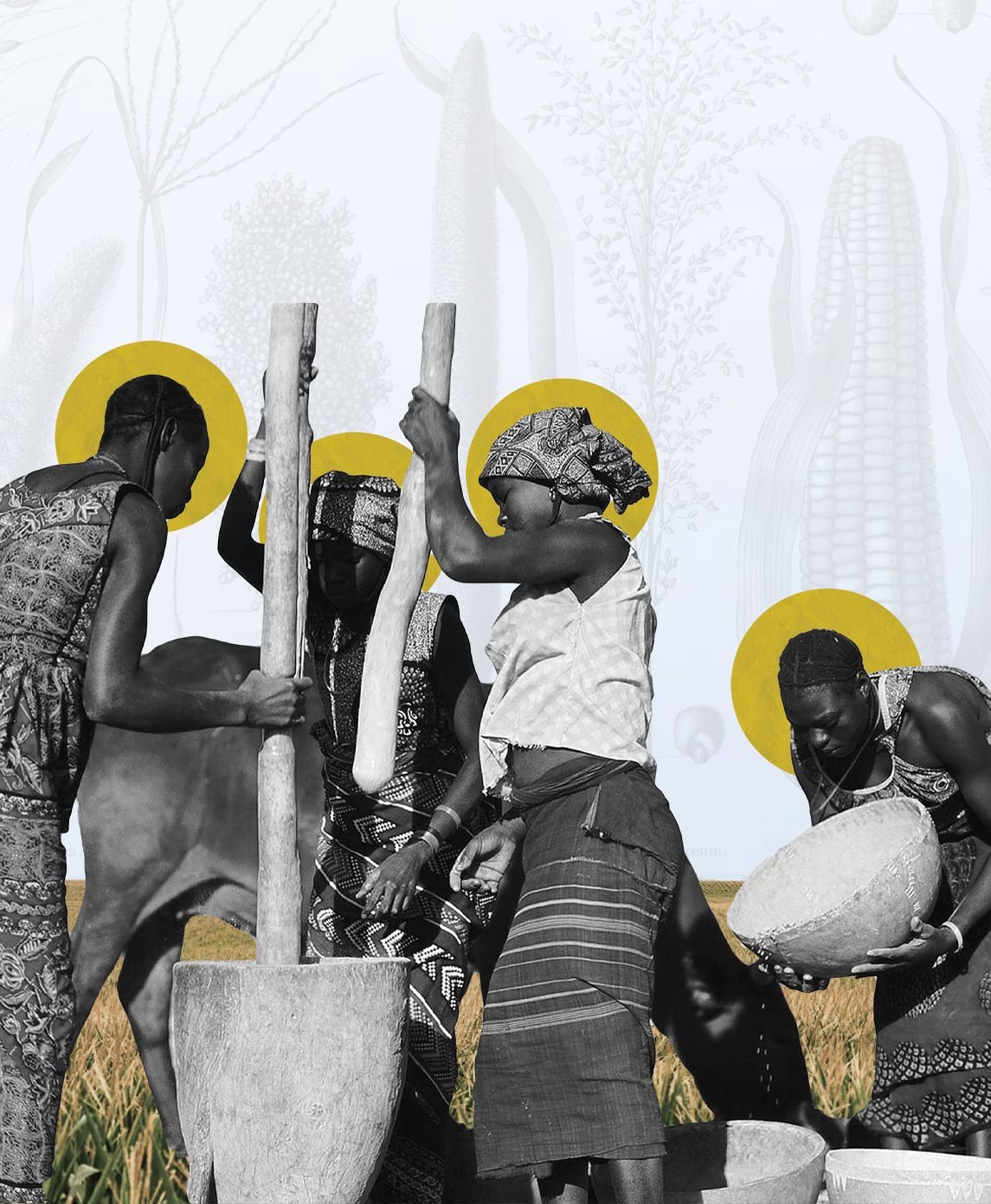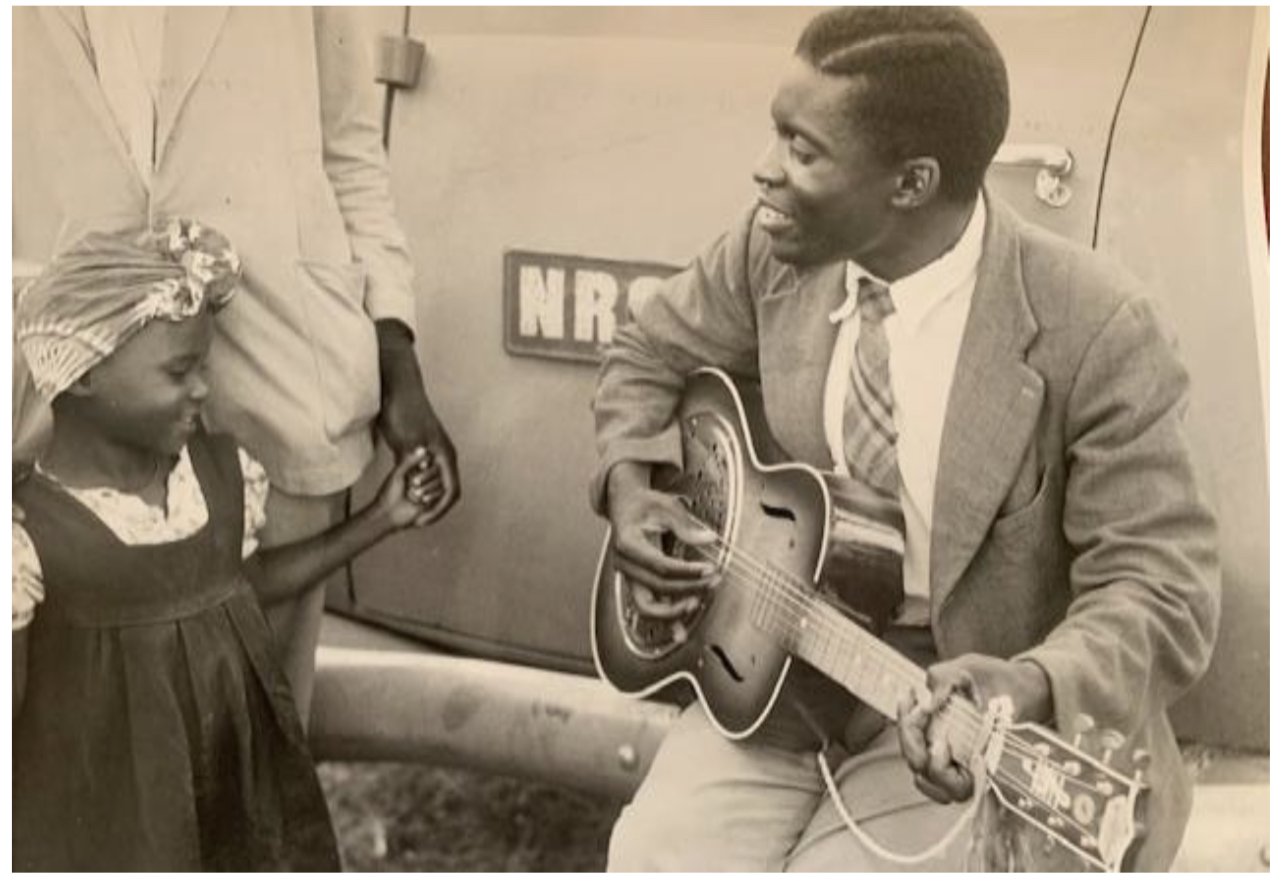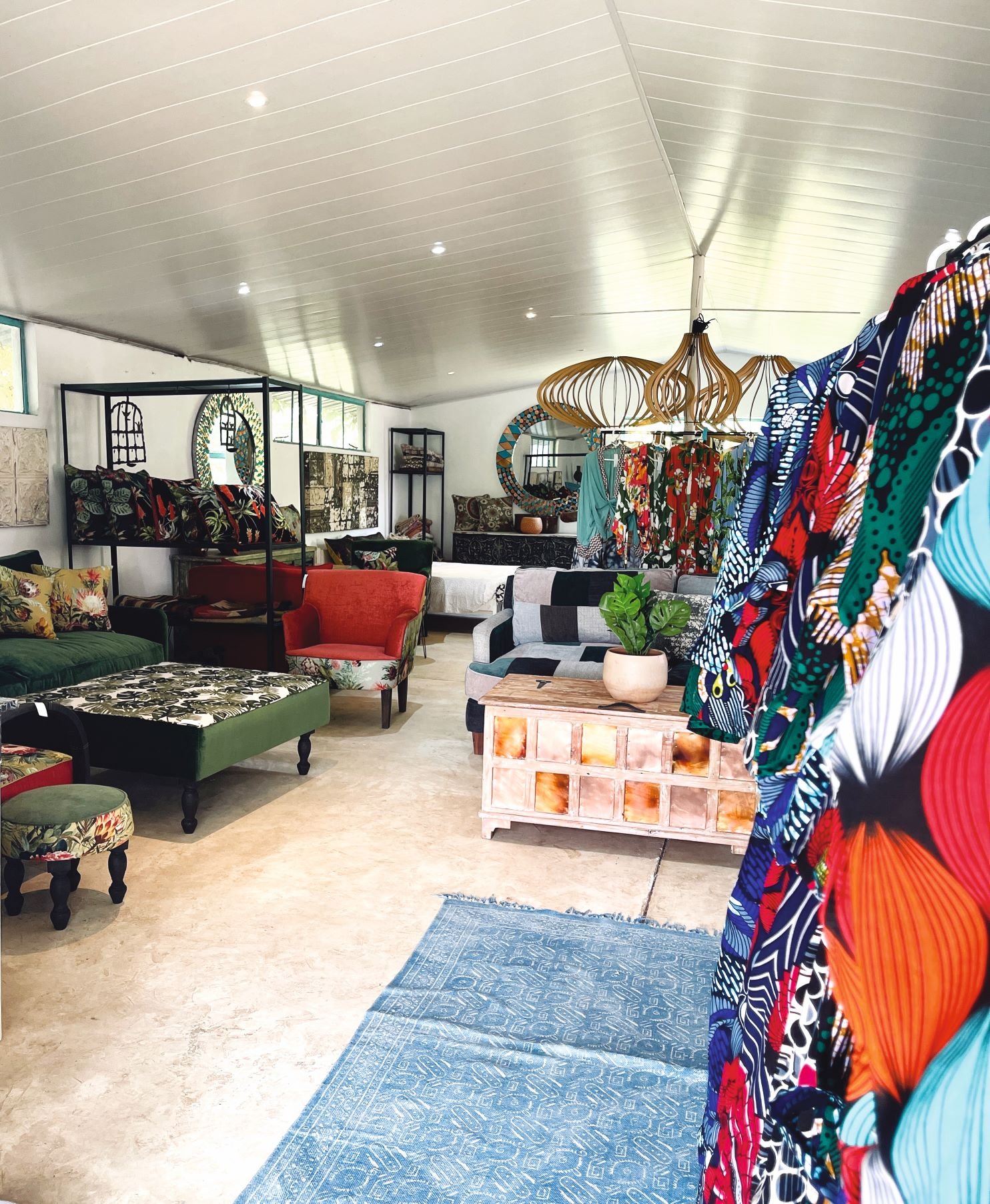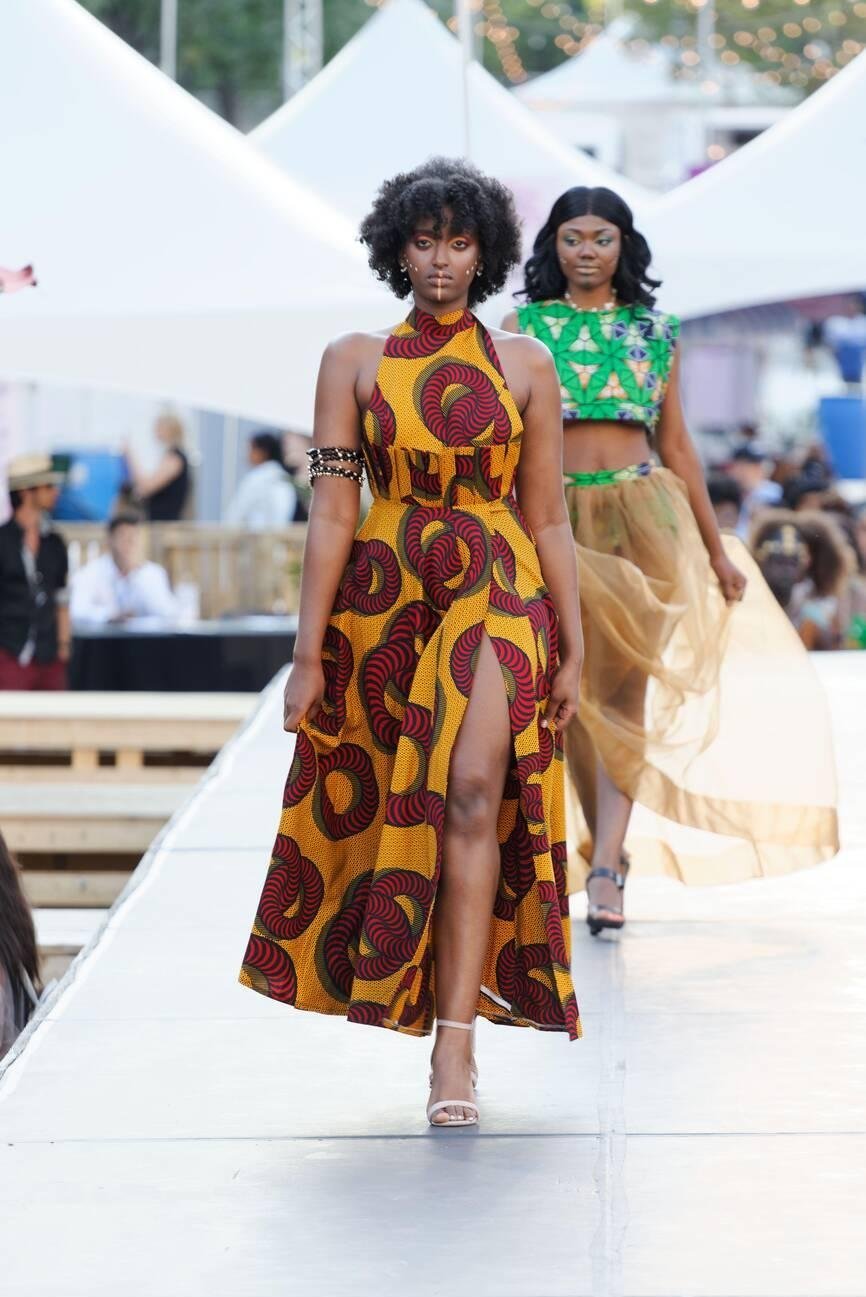Whilst most of us throw away our unused metal products, Owen Shikabeta specializes in up scaling and assembling scrap metal into works of Art.
“Assemblage as an artistic form or medium usually created on a defined surface that consists of three-dimensional elements projecting out of or from the base which is not always the case with contemporary sculpture and through art works like this, I try to provoke thought or sometimes conversation.”

“It all started with toys when I was younger. I’ve always been curious about finding out how things work. I would notice little things like toy cars and the like, then try to make my own.” He says about the beginning of his fascination with this art form.
The appreciation of art stems from a deep place. Before being an artist by practice, Owen sees himself as an artist by nature and the studio his natural habitat. “This is what I was born for. That’s why I keep coming back. I may move from the studio and do some odd jobs but I keep coming back. I feel like I’m just wasting my time if I’m away from the studio too long.
“I had a job painting a recently constructed building. Almost a month in, I felt like I was getting sick. I had to get back to the studio. I had ideas that kept on coming. And if I wasn’t in the studio to carry them out it felt like I was being haunted.
“It was then I realised that I had to be in the studio, or not necessarily the studio but just trying out something. Painting, drawing, sculpting or playing with wires.”

The evolution of Owen’s career has been gradual and steady. Initially wanting to direct his artistic talents towards graphic design, exposure to other artists gave him a new perspective on how his artistic ideas could be expressed. “I did a lot of painting after school and even attended August Studio by Mr. Chafilwa, who was the workshop coordinator. I started meeting new people and got introduced to new types of works like sculpture, so I started trying it out because I saw my friends doing it.
“It helps when you hang out with people who are already doing art like the guys at RoX [Roots of Expression]; Tom Phiri, Bisalom Phiri, Daut Makala, Tamanyile Sichamba, Clarence Albert and a few other cats. Coming from school I looked up to them because they were exposed to art in Zambia and abroad, and I was just drawing, using pencil and paper. Then you meet someone doing something else and you want to try it, I just got curious. Trying to sculpt came easy because of my environment at that time. Life is about changes, so I wanted to challenge myself, I didn’t want to be stuck in one discipline. Visual arts is very wide and can be very fun.”
Among the people he cites as inspiration are the late Flinto Chandia, the late Lutanda Mwamba, Charles Chambata, David Daut Makala whom he works with closely and Germany based Clarence Albert, with whom Owen worked at ‘Art for Art’. “We made a few sculptures and installations while we worked together at Art for Art. It was while doing that that he taught me how to weld. I also learned how to work with clay and paper mache.

Despite having passed through the stages of drawing and painting to get to where he is now, Owen recognises that many people do not view him as an artist in the common perception of the word. “Most Zambians view abstract art or art that has unrecognizable objects as lesser art. But when they view a Caleb Chisha painting they say “this is real art” because of the amazing portraits he does. They grade how good an artist is by how accurate you can paint or draw a portrait. But if you’re sculpting and picking up metal, they just see it as scattered.”
This is a misconception that Owen feels needs changing. Though any such change would be slow. “Semi abstract is one alternative. Where you can recognise some parts. Most Zambians would recognise that as art. I think street art would work. You can combine words and portraits. It has a clearer message that many people can get.“
As a career artist Owen is constantly casting his eye over the artistic landscape in Zambia. Zambian art, like anywhere else in the world, has cyclical trends and tastes. What’s hot today could be a throwback to a bygone era. Owen highlighted the re-emergence of graffiti as one of those current trends. “Graffiti is something people are now paying attention to. A new group of artists are coming up like Dwain [Whitaker] and London [Kumwendo]. We haven’t had a graffiti scene here and it would be nice if more cats would come out. Chibale Kapumpa is another really good artist who paints with a lot of freedom and his work has a street feel to it and I think that’s what makes it unique. Another guy is Ho Jin, he’s from Korea but lives and works in Zambia. His style is like doodling and is quite new. We are currently working on a mural together.”
Ever seeking to evolve and grow as an artist Owen advises anyone seeking to get involved in art as a career to surround themselves with fellow artists who can act as sounding boards. “Try out new things and try to spend time with like minded people. If you’re an artist try to spend time with other artists. Exchanging ideas is a faster way to grow; talk about your art together and what you want to try and do. Don’t box yourself in, expose yourself to everything.”

For 2018 Owen’s plan is simple: spend more time in the studio making more work and trying to attend as many workshops as possible, to keep up with the trends and move with the times.
With his first solo exhibition in the works, Owen hopes to express himself in a few new subjects. “I want to try and put some new ideas into sculptures, something not often seen in Zambia. The late Flinto used to put on solo shows for sculptures. I’ve seen Eddie Mumba do it as well, but not very many others. So I would like to try that.”
His desire to make use of all resources to mould himself into the best he can be echoes in the work he has become known for. An amalgamation of knowledge and skills, brought together to produce an artist. Life truly imitates art.
